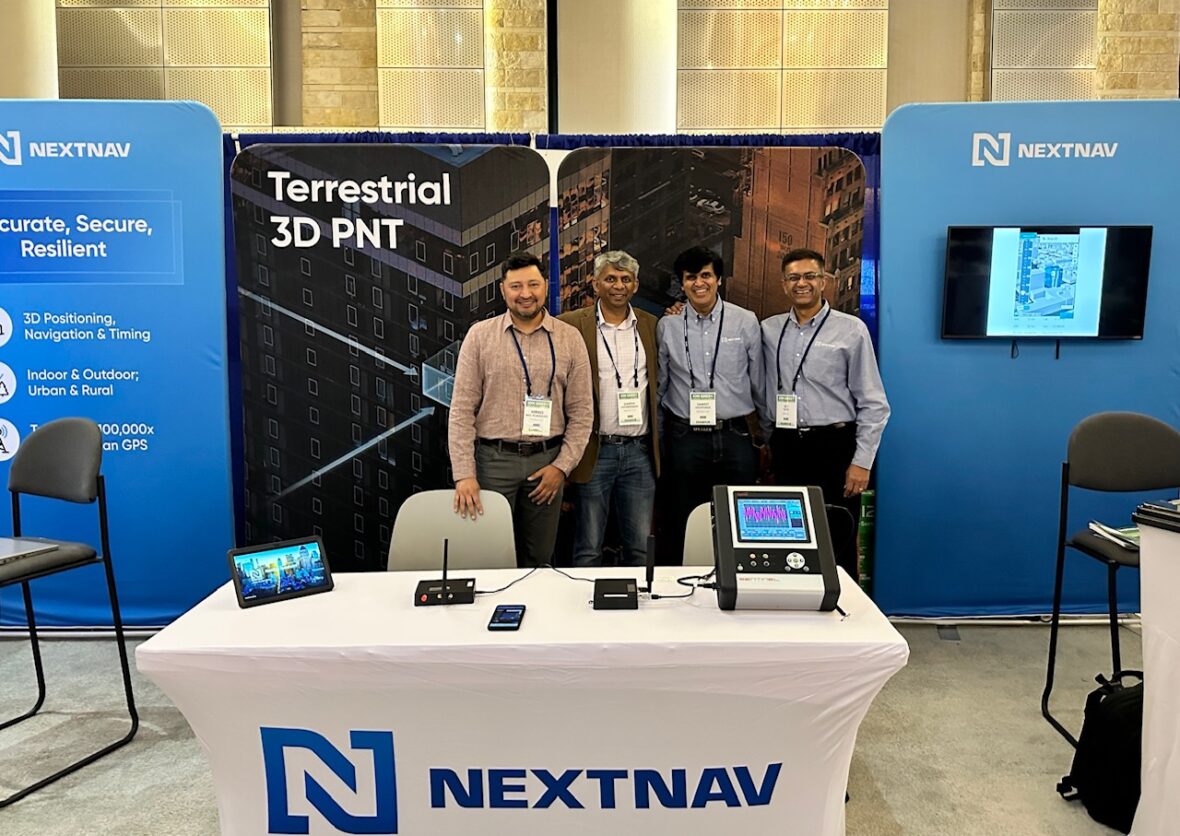
As we bid farewell to 2023, NextNav reflects on a year marked by significant milestones and results in the realm of next-generation GPS. From a CEO transition to expanding our reach with new nationwide carrier partnerships, launching European testbeds, and earning recognition for our cutting-edge TerraPoiNT technology, each development has played a crucial role in solidifying NextNav’s position as a leader in the geolocation industry. Join us as we recap the top 5 happenings that defined NextNav’s journey throughout the year.
1. NextNav Announces CEO Transition
Mariam Sorond, veteran industry leader, was named NextNav CEO, effective November 29, 2023. Sorond brings extensive spectrum expertise and a proven track record of evolving telecommunication technology and strategy.
“We are thrilled to welcome Mariam as NextNav’s CEO,” said Gary Parsons, NextNav’s Chairman of the Board of Directors. “Mariam’s extensive spectrum expertise and proven track record of evolving telecommunication technology and strategy align perfectly with the ongoing development of NextNav’s broad spectrum portfolio and industry-leading 3D geolocation and GPS resiliency capabilities. In recent years, Mariam led technology efforts at both VMware and CableLabs and was instrumental in architecting DISH’s wireless spectrum and network. Her deep skill set, and vast technical acumen will be invaluable to the team as it drives towards the next phase of its growth.”
2. NextNav Shines at ION 2023
NextNav exhibited and presented at this year’s event, showcasing our TerraPoiNT 3D PNT technology. We conducted live demonstrations leveraging LTE signals to provide accurate timing and a 3D position. This demo followed testing conducted in the Bay Area earlier this year.
“The company demonstrated a new dedicated system at the conference that Pattabiraman said is the answer for scaling high-precision applications like autonomous vehicles and drones, as well as electrical grids, timing centers, infrastructure and public safety. It’s a solution that can be quickly and easily integrated in both urban and more rural areas, providing a resilient, precise alternative solution that can be scaled without having to put a transmitter “in every nook and cranny.”
>>Read InsideGNSS’s coverage of the event here

3. New Nationwide US Carrier Added for Pinnacle 911
NextNav was selected by an additional nationwide U.S. carrier to deliver vertical location capabilities for E911 via its Pinnacle service, which will enable precise z-axis for 911 calls made on the carrier’s device portfolio. Additionally, Pinnacle was integrated into multiple devices on the Verizon network, now available in stores.
“The U.S. Federal Communications Commission (FCC) has issued a requirement for all wireless providers to provide z-axis location for 911 calls to ensure dispatchers and responders are best equipped to meet emergency needs. Following the integration of Pinnacle, networks are able meet or exceed the FCC requirements at all levels, with vertical location capabilities operational well ahead of required deadlines.”
>>Read the full announcement here
4. NextNav Launches European Testbed

In June, NextNav unveiled the first EU commercial testbed for its Pinnacle vertical location technology. Operating in the Paris area, the testbed will demonstrate the benefits Pinnacle can bring to local emergency response agencies and integration with applications.
“We are delighted to introduce a Pinnacle testbed in the Paris area to show how we address the challenge of vertical location accuracy as a first step towards realizing our vision of next-generation GPS services in Europe,” said Ambroise Popper, General Manager and Vice President, NextNav France. “This initial deployment will enable us to demonstrate our Pinnacle technology to industry partners and pave the way for delivering not only superior floor-level accuracy, but also resilient 3D PNT capabilities through a terrestrial-based system in the near future.”
5. JRC Report Recognizes TerraPoiNT
The European Union’s Joint Research Centre (JRC) released a report earlier this year on its trials of Alternative Position, Navigation, and Timing (A-PNT) technologies. The JRC recognized TerraPoiNT as a mature solution that meets or exceeds all relevant benchmarks.
“TerraPoiNT demonstrated indoor positioning, timing and navigation, including vertical location accuracy within 2 meters 90% of the time, throughout the entire test, according to the report. It was also only one of three technologies to successfully demonstrate timing stability over multiple days of GNSS loss. Overall, it exceeded critical infrastructure requirements by maintaining timing stability within 15 nanoseconds 90% of the time.”